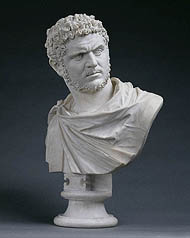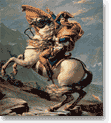Students should be able to:
• make specific verbal and written observations of details in a work of art.
• interpret meaning in a work of art.
• describe visual techniques used by artists to convey a sense of power and importance.
• use metaphor, simile, and alliteration to describe a work of art.
• define symbolism and identify symbols in a work of art.
|
 |
 |
1. Review the activities and decide if your students will do all or only selected activities.
2. Use the Itinerary & Map sheet to order the activities and create itineraries for your students.
3. The activities can be done in any order. Each chaperoned group will do the activities in a different order.
4. Print out and make photocopies of the activity sheets for each student.
Below is a description of each activity:
The Power of Faith and of Art to Educate—Students learn how artists can educate the public about the lives of important people by studying an altarpiece representing the life of St. Catherine of Alexandria.
Note:This activity focuses on an altarpiece that is periodically removed from the galleries. Check the Web page about the painting to be sure it is on view: St. Catherine of Alexandria: Scenes from Her Life
The Power of an Image and Its Message—By examining a painting of a biblical scene, students discover how artists use composition elements to create emphasis and to convey meaning. Students learn about the story and refleect upon its message.
The Strength of an Individual: A comparison of an Emperor and a Common Man—Students look closely at and compare two sculpture busts to determine how artists reveal the character of individuals.
The Power of Art to Create Controversy and Inspire Poetry—Students learn about a painting that inspired both controversy and poetry. They make connections to controversial art in their own lives and use metaphor, simile, and alliteration to interpret the painting in poetic ways.
Portraits of Wealth and Refinement (Parts I and II) —Students look at two paintings of wealthy patrons and discuss how an artist can convey and represent the refinement and wealth of a sitter visually.
A Portrait of a King (Parts I and II) —Students look at two very different portraits of King Louis XIV—a painting and a cabinet—and compare the ways each symbolizes and communicates the power of the king. |
 |
 |
 |
| Bust of Emperor Caracalla, Bartolomeo Cavaceppi |
 |
|
Visual Arts
Artistic Perception
1.0 Processing, Analyzing, and Responding to Sensory Information through the Language and Skills Unique to the Visual Arts
Students perceive and respond to works of art, objects in nature, events, and the environment. They also use the vocabulary of the visual arts to express their observations.
Aesthetic Valuing
4.0 Responding to, Analyzing, and Making Judgments about Works in the Visual Arts
Students analyze, assess, and derive meaning from works of art, including their own, according to the elements of art, the principles of design, and aesthetic qualities.
English-Language Arts
Writing
1.0 Writing Strategies
Students write coherent and focused essays that convey a well-defined perspective and tightly reasoned argument. The writing demonstrates students’ awareness of the audience and purpose. Students progress through the stages of the writing process as needed.
Listening and Speaking
1.0 Listening and Speaking Strategies
Comprehension
1.1 Formulate judgments about the ideas under discussion and support those judgments with convincing evidence.
1.3 Interpret and evaluate the various ways in which events are presented and information is communicated by visual image makers. |
 |

|


